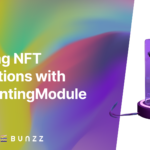Decentralized Autonomous Organizations (DAOs) are digital organizations run by smart contracts on the blockchain. They are decentralized, meaning that no central authority or leader is controlling, and instead, decision-making power is distributed among its token holders.
Building a DAO ecosystem can be complex and multifaceted, but following these key steps can increase your chances of success.
Step 1: Define the Purpose and Goals of the DAO
The first step in building a DAO ecosystem is to define the purpose and goals of the organization. Doing so will guide the development of the DAO’s structure and decision-making processes. The purpose and goals will determine the type of token model the DAO will use.
Step 2: Choose a Blockchain Platform
The next step is to choose a blockchain platform that will support the development and deployment of the DAO. Ethereum is currently the most popular platform for building DAOs, but other options are available, such as EOS, TRON, and more. Each platform has its own set of advantages and disadvantages, and it’s essential to choose the one that best meets the needs of the DAO.
Step 3: Design the Governance Structure
Once a blockchain platform has been chosen, the next step is to design the governance structure of the DAO. This includes determining the roles and responsibilities of different members and the decision-making processes and voting mechanisms used.
For example, will the DAO be governed by a group of elected representatives, or will it be fully decentralized and community-driven? This is an important step, as the governance structure will determine how the DAO functions and how decisions are made.
Step 4: Develop the Smart Contracts
The next step is to develop the smart contracts that will be used to implement the DAO’s governance structure and decision-making processes, such as the ERC20 Token smart contract for DAOs. These contracts should be thoroughly tested and audited to ensure they are secure and reliable. This is a critical step, as any errors in the smart contracts could have severe consequences for the DAO.
Step 5: Deploy and Test the DAO
Once the smart contracts have been developed, the next step is to deploy the DAO on the chosen blockchain platform and test it to ensure it is functioning as intended. This step will also involve creating a user interface that will make it easy for people to interact with the DAO.
Step 6: Community Building
Building a solid and active community is vital to creating a thriving DAO ecosystem. This may involve offering incentives for community members to participate in the DAO, creating a transparent communication channel, and working with other projects to create a stronger ecosystem. A strong community is essential, as it will help ensure that the DAO is well-governed and that decisions are made in the community’s best interests.
Step 7: Experiment with Different Approaches
To see what works best, keep experimenting with different approaches, such as token models, governance mechanisms, or ways of engaging with the community. This will allow you to learn from your mistakes and adjust as needed.
Step 8: Continuously Improve the Ecosystem
Continuously monitor the ecosystem, listen to feedback, and make improvements as needed. This will help to ensure that the DAO remains relevant and effective over time. It’s important to remember that a DAO is a decentralized organization; as such, it needs to be adaptable and responsive to the community’s changing needs.
In conclusion, creating a DAO ecosystem is a complex and multifaceted process that requires careful planning, development, and ongoing maintenance. By following these key steps, you can increase your chances of success.
Next Steps
Are you looking for an easy and efficient way to create ERC20 DAO tokens for your decentralized autonomous organization (DAO)? Look no further! We have uploaded a comprehensive ERC20 DAO token smart contract module template that will streamline the development process and ensure that your tokens fully comply with the ERC20 standard.
Using our module templates can save time and resources while ensuring that your tokens are secure and reliable. This smart contract module includes all the necessary functions and features for creating ERC20 DAO tokens, including transfer and approval functions and a mechanism for token holders to vote on proposals and govern the organization.
Access the smart contract template here.
Simplify your development process and create a secure and reliable ERC20 DAO token for your organization.







